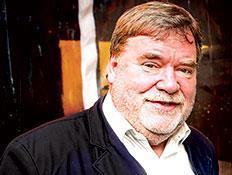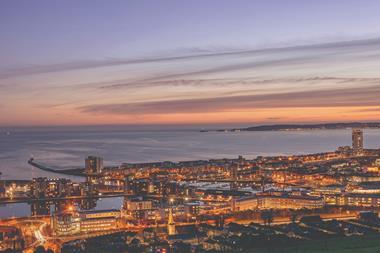Fifty years ago it was generally the case that ‘good’ architects, the ones who had redesigned Britain through work on schools, universities, hospitals and housing, did not do ‘commercial’ work.

There was plenty to be done without having to put up with the world of finance.
This attitude, reinforced by the huge public sector employment of architects (well over 50%), lasted more or less until Margaret Thatcher came along. When Sir Stuart Lipton wanted to use Arup Associates as his architect for the early buildings on Broadgate, the Arup main board had to discuss whether it wished to work with a speculative developer.
The break-up of this architectural apartheid system came with the rise and rise of architects such as Lord Norman Foster, Lord Richard Rogers and Sir Terry Farrell - all of whom were more than happy to take on commercial work without subscribing to the relatively dumb architectural thinking that had informed the world of offices, shopping centres and sheds. Even though buildings such as the HSBC headquarters and Lloyd’s of London were for user clients rather than speculative, the message was that working in the commercial sector was to be pursued rather than abjured.
Today, the status of global architects and their range of work has never been greater. Frank Gehry and Foster are being paid not-so-small fortunes to design housing at Battersea Power Station because the overseas investor market will pay a handsome fee for those brand names. And in architecture, Norman and Frank are two of only three truly global brands - that is to say architects who are recognised way beyond the professional world in which they operate.
The third is Zaha Hadid, who spoke at MIPIM UK last month. Rarely out of the news, Dame Zaha (as she now is) was recently awarded the Royal Gold Medal for Architecture. This prompted a BBC interview from which she walked out (or rather left the radio car) after the interviewer repeated some untrue and grossly libellous remarks about a project in Qatar. The BBC later apologised.
A more constructive and interesting line of inquiry would have been to ask why there are so few Hadid buildings in what has been for many years her home city. The two notable buildings completed in recent years are the Olympic aquatics centre, the design for which helped to promote and win the London Games bid, and a school in Brixton that won the Stirling Prize.
But where is the commercial work? Many may think that architects such as Zaha are only interested in cultural and educational projects where money is no object. Her talk at MIPIM UK proved otherwise. A series of dazzling slides showed just how much of the practice output worldwide is commercial in nature. Nowhere is this truer than in China where, in addition to the occasional opera house, work includes a 5m sq ft complex here, 4m sq ft there. These projects are generally mixed use with a dominant element, either residential or office, accompanied by ‘leisure’ architecture of various sorts, but particularly shopping.
What made the talk so fascinating was the realisation that the sort of architecture practised by the Hadid office in respect of commercial buildings has a very close relationship with what it is doing for the non-commercial world. This includes investigating the idea of paired buildings nestling together, sometimes reinforcing each other structurally or connecting via bridges, sometimes solid and sometimes with voids, and analysing how dramatic vistas (internal and external) can contribute to the life of the building.
Apart from China, we saw commercial work in Miami, New York City, Milan, Singapore and Vienna, distinctively different yet recognisably deriving from a certain attitude to architecture and urbanism. Zaha’s output is proof that avant-garde design can have as much influence by being built in quantity as it can by remaining as paper architecture.
Sooner or later, a bright developer will put Zaha on London’s commercial property architecture map, and things will never be quite the same again.
Paul Finch is programme director of the World Architecture Festival





























No comments yet